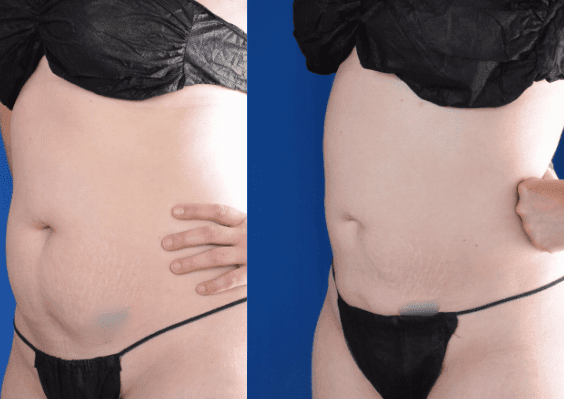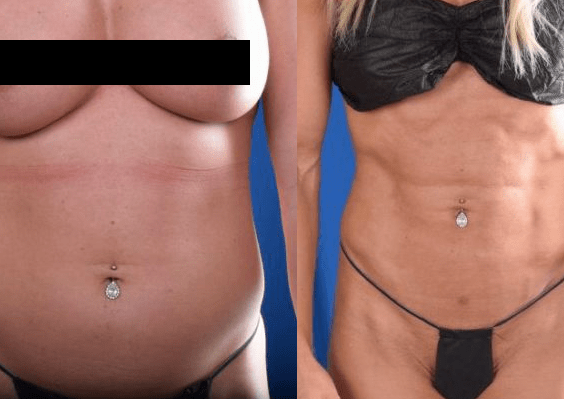“Ozempic Face” is used to refer to the cosmetic changes that some patients may experience while taking semaglutide, a medication primarily used for weight loss and the treatment of type 2 diabetes.
Semaglutide often goes by the brand names, Ozempic, Wegovy, and Rybelsus. It is a GLP-1 receptor agonist, an imitator of the hormone GLP-1 that helps to regulate blood sugar levels and stave off hunger. While many patients choose semaglutide to help them form healthier eating habits and lose extra pounds, sometimes, it can cause unwanted hollowness, sagging, and premature folds in the face; the natural results of rapid weight loss.
After achieving your weight-loss goals with semaglutide, you should not have to compromise your facial appearance and confidence. Luckily, at Millard Plastic Surgery, there are cosmetic solutions available to mitigate the effects of Ozempic face. At our practice in Denver our triple-board certified surgeon with over 30 years of experience, Dr. David Hendrick, utilizes minimally invasive techniques to restore natural facial and neck contours so you can celebrate your weight loss comprehensively. To get in touch with our practice today, call (303) 792-5665 or contact us online for a consultation.
How Semaglutide Affects Facial Fat
Semaglutide is a medication that affects the amount of insulin within the bloodstream, a hormone that helps break down glucose, or sugar, present in food. People with type 2 diabetes do not have a fully functioning pancreas, the organ responsible for producing enough insulin and keeping blood sugar at normal levels. For diabetics, it’s critical to control these levels so they can lower their risk of kidney and cardiovascular diseases and possible nerve damage in the long term. (1)
In patients taking semaglutide for weight loss, this extra insulin travels to the hypothalamus part of the brain which then transmits chemical signals that the body is not hungry. The medication is also able to delay the digestive process, allowing patients to feel fuller for longer periods. (2) This makes semaglutide not only a diabetes treatment but also an effective tool for diabetes prevention since it is a disease that is much more likely to develop in those who are overweight or obese.
After losing weight with semaglutide, patients experience a loss of facial volume and an increase in wrinkles and folds for a variety of reasons. Firstly, fat cells shrink with any type of weight loss. Research has shown that as fat atrophies after massive weight loss, the skin exhibits a reduction in the amount of thick collagen fibers, the proteins that provide rigidity. There is also an increase in thin collagen fibers and an increase in elastin, the protein that makes skin much more elastic and stretchy. The skin is then unable to recoil or repair itself to maintain its taut structure. (3) At our practice, we can treat patients with these signs of aging with facial fat transfer and facelift and/or neck lift procedures.
Candidates for Ozempic Face Treatments
Facelifts, neck lifts, and facial fat transfer procedures are not only designed for those who’ve received semaglutide treatment; they are capable of reversing similar facial effects related to aging as well. These procedures are designed for those in good health with no underlying conditions that can negatively affect the healing process. This will allow for better-quality blood circulation and a speedy recovery with fewer risks of complications.
Personal Consultation
Dr. Hendrick’s expertise allows him to assess the impact of semaglutide specifically on your facial features, taking into consideration any potential changes in skin texture, volume, and overall appearance. He will also carefully review your health assessment and patient history to ensure that recommended treatment options are safe and appropriate for you.
To schedule your thorough, personalized consultation today, call Millard Plastic Surgery in Englewood, CO at (303) 792-5665 or send us a message through our contact page that briefly discusses your concerns. Our staff will get back to you as soon as possible.
Preparation
Before any surgery, you should be sure to stop any blood-thinning medications or supplements that can result in excessive bleeding during surgery. Dr. Hendrick will go over your current prescriptions and make any necessary adjustments. Next, you should pick up your prescriptions that will serve to keep you comfortable during your first few days of recovery. If you are a smoker, you should plan to quit 2 weeks before your procedure date and 2 weeks following. Finally, you should make plans for a trusted friend or family member to escort you and assist in your recovery for the first 24 hours.
Procedure Options
Facial Fat Transfer
For a facial fat transfer or fat grafting procedure, Dr. Hendrick will first administer a local anesthetic into the donor area, a site from which fat will be harvested. Usually, the donor area is somewhere in the flanks, abdomen, or upper thighs. Next, he will make an incision of only a fraction of an inch to insert an instrument called a cannula. A solution called tumescent fluid is injected to provide more numbing effects and to loosen the fat. Then, a gentle suction is applied to harvest the fat. On average, about 30 ml, or 2 tablespoons of fat are removed for facial rejuvenation. (4)
Dr. Hendrick harvests and purifies the fat using a device called Dermapose. He will prepare syringes of fat and strategically inject areas of hollowness within the face, ensuring that these applications serve to enhance the face with slightly more rounded features. Fat transfer can greatly improve the appearance of these areas of the face most affected by weight loss:
- Upper eyelids
- Cheeks
- Chin
- Temples
- Jawline
Facelift
A facelift, also called a rhytidectomy, won’t restore facial fat, but it can sculpt any remaining fat deposits and trim loose skin that contributes to the effects of looking older. Dr. Hendrick will first determine the best type of facelift to address your specific cosmetic issues, such as:
- Traditional Facelift
- Mini Facelift
- Midface Lift
- Extended Facelift
- Deep Plane Facelift
All facelifts involve an incision around each ear that may or may not extend further into the hairline. He will access the connective tissue known as the SMAS (superficial musculoaponeurotic system) layer that underlies the skin and/or the ligaments beneath the SMAS. While modifying and tightening these structures and elevating particular muscles and fat deposits, he will recreate a naturally lifted and more youthful face shape. After conducting these changes, he will redrape the skin around the incisions and trim off the excess. In most cases, fat transfer can be added to facelift procedures for facial tissue volumization.
Neck Lift
A Neck Lift may be a procedure on its own or part of a more comprehensive facelift. One neck rejuvenating procedure called a submentoplasty, involves just one small incision below the chin. Through this incision, Dr. Hendrick will be able to remove extra fat and tighten the smaller muscles of the upper neck. For a complete neck lift, Dr. Hendrick will use a similar technique to elevate the platysma muscle- the muscle at the front of the neck- and remove loose skin and fat. This type of procedure can smooth out the platysma bands that contribute to the look of an aging neck.
Recovery and Results
Whether you choose to get a facelift, neck lift, or a facial fat transfer, it’s important to remember that facial and neck swelling and bruising are to be expected. Dr. Hendrick will provide you with prescription medications to provide a more comfortable recovery experience. Less extensive neck lifts, facelifts, and facial fat transfers require about 1 week of downtime, while more comprehensive versions of these procedures require roughly 2 weeks of downtime.
For the lift procedures, Dr. Hendrick will encourage you to use ice for the first few days, but he advises against this method for facial fat transfer patients. The cold temperature can negatively affect the health of the grafted fat cells. Although most of the initial swelling will be gone after 2 weeks, the fat cells do not fully graft for another few months. The results you see after approximately 9 months are your permanent results, so long as you maintain your weight. Facelifts, on the other hand, last about 10 to 15 years before the natural aging process begins to take hold.
Cost of Ozempic Face Treatment in Denver
The cost of your facial fat transfer, neck lift, or facelift at Millard Plastic Surgery will vary depending on several factors that are unique to each patient’s individual needs and goals. For a more comprehensive understanding of what your treatment may cost, schedule your personal consultation with triple board certified plastic surgeon, Dr. David Hendrick. Call our location in Englewood, CO at (303) 792-5665 or visit our contact page to get started today.
References
- Mouri Mi, Badireddy M. Hyperglycemia. National Library of Medicine. Published 2019. https://www.ncbi.nlm.nih.gov/books/NBK430900/
- Friedrichsen M, Breitschaft A, Tadayon S, Wizert A, Skovgaard D. The effect of semaglutide 2.4 mg once weekly on energy intake, appetite, control of eating, and gastric emptying in adults with obesity. Diabetes, Obesity, and Metabolism. 2021;23(3):754-762. doi:https://doi.org/10.1111/dom.14280
- Rocha RI, Junior WC, Modolin MLA, Takahashi GG, Caldini ETEG, Gemperli R. Skin Changes Due to Massive Weight Loss: Histological Changes and the Causes of the Limited Results of Contouring Surgeries. Obesity Surgery. 2021;31(4):1505-1513. doi:https://doi.org/10.1007/s11695-020-05100-3
- Schultz KP, Raghuram A, Davis MJ, Abu-Ghname A, Chamata E, Rohrich RJ. Fat Grafting for Facial Rejuvenation. Seminars in Plastic Surgery. 2020;34(01):030-037. doi:https://doi.org/10.1055/s-0039-3402767





